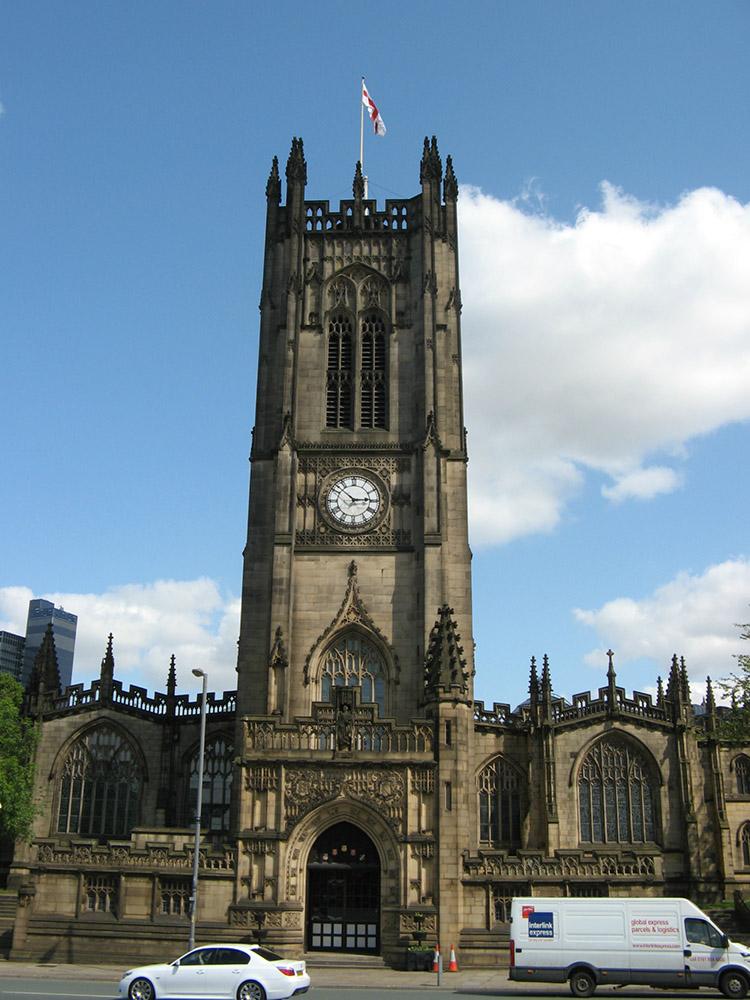It is on Victoria Street in Manchester city centre and is a grade I listed building.
The former parish church was rebuilt in the Perpendicular Gothic style in the years following the foundation of the collegiate body in 1421.
Then at the end of the 15th century, James Stanley II (warden 1485–1506 and later Bishop of Ely 1506–1515) was responsible for rebuilding the nave and collegiate choir with high clerestory windows; also commissioning the late-medieval wooden internal furnishings, including the pulpitum, choir stalls and the nave roof supported by angels with gilded instruments.
The collegiate church became the cathedral of the new Diocese of Manchester in 1847. It was extensively refaced, restored and extended in the Victorian period, and again following bomb damage during World War II. It is one of fifteen Grade I listed buildings in Manchester.
History
The origins of Manchester’s first churches are obscure. The Angel Stone, a small carving of an angel with a scroll, is preserved in the cathedral. It was discovered in the wall of the cathedral’s south porch providing evidence of an earlier, possibly Anglo-Saxon, church.
It has been dated to around 700 AD, however the Corpus of Anglo-Saxon sculpture dates the sculpture to the twelfth century.


